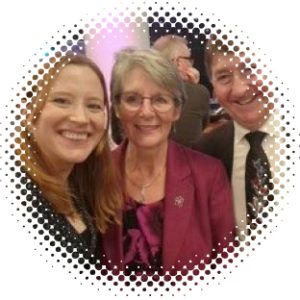In order to showcase the work we do in Pattern-Cog, European project funded by ERA PerMed, we caught up with Ruth Stephen, senior researcher, and asked her a few questions about her work, expectations and challenges.
- Tell us a bit about you and the institution you work for.
I am working as a senior researcher within the Nordic Brain Network (NBN), a platform for knowledge exchange and collaboration on brain health research. NBN is based in both academic and clinical centres aiming to optimise research in patient care through joint collaboration. Presently, I work at the Karolinska Institutet, Stockholm, Sweden attached to the Karolinska University Hospital.
My research interests include profiling of persons at-risk of dementia based on their brain and clinical characteristics to help identify which intervention would work at what time and for whom. During my PhD, I investigated the characteristics of brain structure and clinical measures in people at-risk of dementia and how a multidomain lifestyle intervention (diet, exercise, cognitive training, social activity, and monitoring of cardiovascular and metabolic risk factors) impacts the brain structure and the overall dementia risk.
- What is the focus of your work within the Pattern-Cog project?
We aim to test the BrainAge score (developed by our collaborators in the Pattern-Cog project) in populations at-risk of dementia as well as memory clinic patients.
The BrainAge score tells us how old a person’s brain is compared to their real age. We will test if the BrainAge score can give us information on the risk of cognitive problems and changes in the brain structure related to dementia. We will also examine how does the BrainAge score change in response to the interventions targeted at reducing the risk of dementia and how do these changes correlate with the brain structure. Results will facilitate the use of the BrainAge score in trials for identifying right people, at the right time directing them to appropriate interventions and assessing the impact of interventions.
- What do you enjoy the most about your work on the Pattern-Cog project? What do you find most challenging?
I find it fascinating how Pattern-Cog has brought multidisciplinary experts together with a common goal of dementia prevention. I believe by synergising our expertise and efforts, we have the potential of making a greater impact to benefit individuals and their carers.
- What are your expectations and what do you think is the importance of the project for the wider field?
We have seen previously that interventions work best if targeted at the right persons in the right time. With the knowledge produced within this project, we expect to have an advanced ability to enhance early detection and facilitate identification of people who can benefit from the appropriate interventions at the right time. will help us This is particularly important in the context of anti-amyloid treatment drugs which are expected to be approved in Europe soon.

















